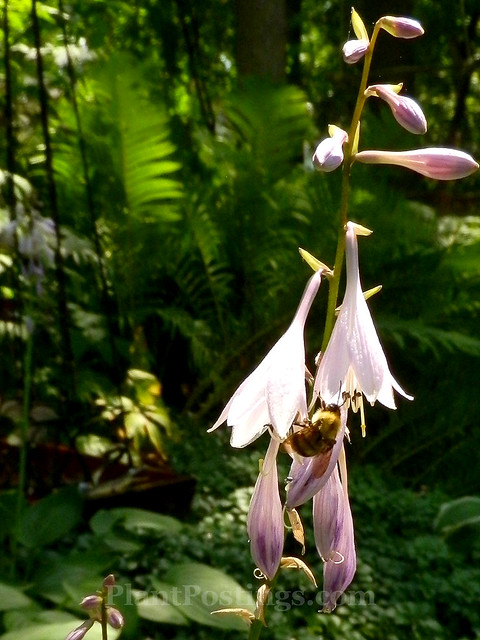
I wish I could say that my fall 2013 seeding attempts were mostly successful. But that would be untrue. Now that high summer 2014 is here and the Hostas are flowering, it's time to concede that those attempted new plants aren't with us.
For the most part, the seeds didn't germinate. Or if they did, they didn't grow and thrive.
It's likely many factors contributed to this: a brutally cold winter, my heavy shade garden, ground covers and competition with other plants, disturbance and consumption by animals and birds, and other reasons.
I was patient for a while. And there were a few exceptions--plants that grew from seed.
I found ways of coping with the rest.
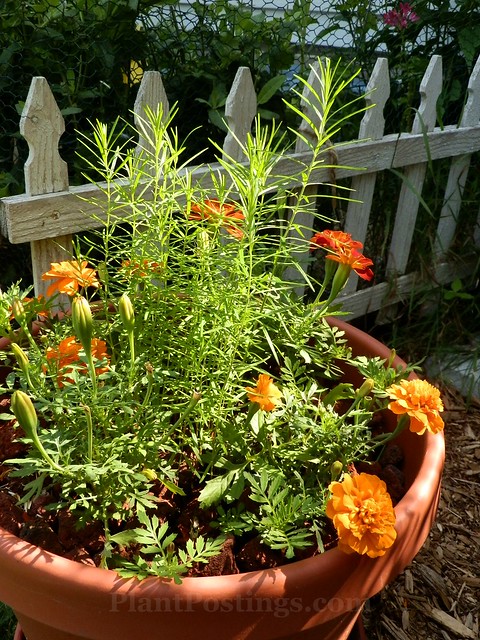
The Whorled Milkweed (Asclepias verticillata) seeds I planted in a pot with Marigolds now seem happy. I hope they'll bloom soon. I haven't seen monarch butterflies on them, but I have seen a few monarchs flitting through the garden near other Milkweeds.
I think the Virginia Bluebells (Mertensia virginica) emerged, although they didn't bloom this spring and they're dormant now. I've heard it can take a couple of years for flowers to form on the plants.
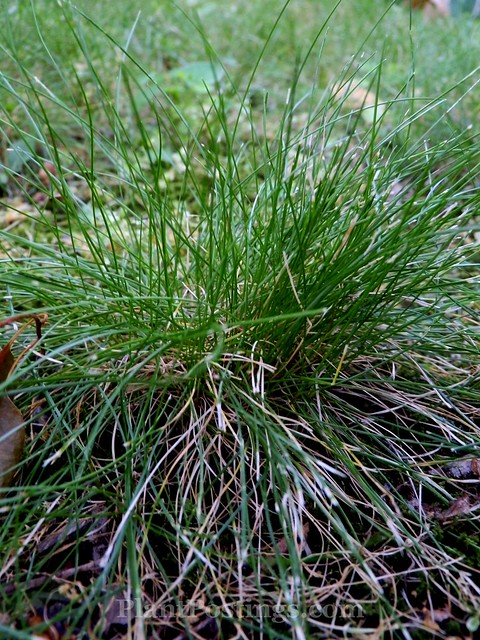
I didn't see any sign of the Pennsylvania Sedge (Carex pensylvanica) where I planted its seeds, although I'm noticing several sedges growing in the lawn. Hmmm, maybe it's time to have a sedge lawn...

The False Asters (Boltonia asteroides) didn't emerge, so I recently purchased a couple of plants to take their place.
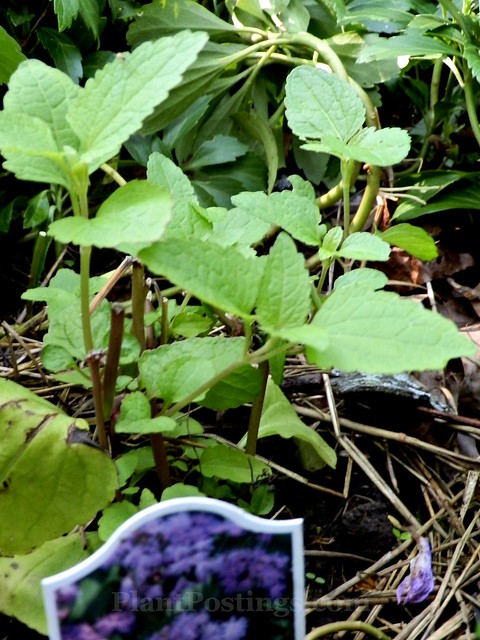
Same with Blue Mistflowers (Conoclinium coelestinum).
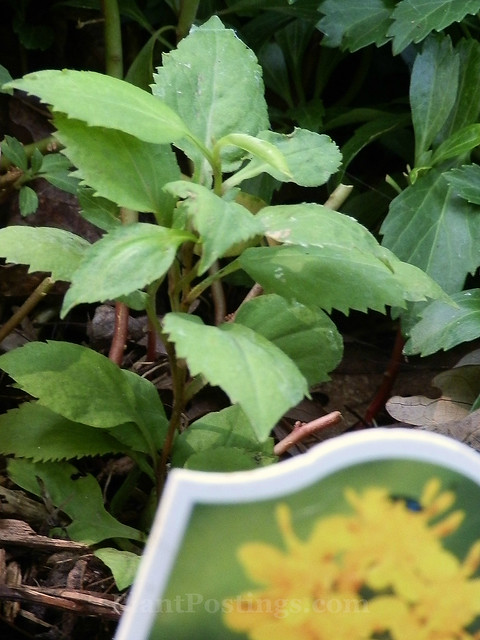
I seeded Foxgloves (Digitalis purpurea) last fall and also scattered seeds from the mother plant. And I planted a small first-year Foxglove late in the season (since they're biennial, it takes them two years to bloom). I noticed tiny plants growing in the early spring, but they all died back. So, I planted Zigzag Goldenrod (Solidago flexicauls) near them. If they both come back next spring, it will be a bonus.
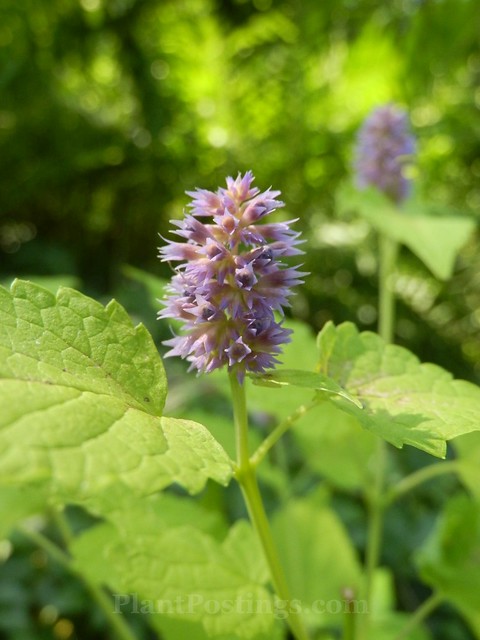
Oh, and the bare-root Anise Hyssop (Agastache foeniculum) I planted in October didn't seem to come in either. In the meantime, several small plants are growing near the spot that could be Anise Hyssop--I'm leaving them until they flower (next season?). In the meantime, I bought a hybrid A. foeniculum 'Golden Jubilee' plant, which is doing quite well.
Because of my dismal results, I'm unlikely to try fall seeding again--at least not in this shady, established garden. But it was fun to try.
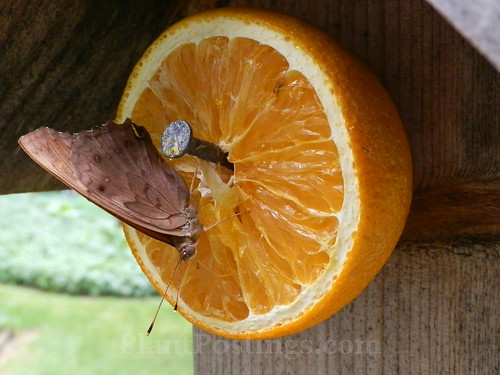
Another, more recent, experiment attracted a special visitor the other day. I put Oranges out on the oriole feeder, and a Tawny Emperor butterfly came to visit. I don't recall seeing these beauties in the garden in the past. They fly fast, and don't seem to rest long with wings open. Their upper wings are a bright orange color when highlighted by the sun. Click this link for more info about Tawny Emperors.
This little guy visited the Oranges two days in a row--the second day he was on that fruit from noon to nightfall. I saw him (or another Tawny) flying around again today, but it didn't land on the fruit. I'll keep supplying the Oranges, though, in case other butterflies need refreshment.
I've never tried fall seeding ~ sorry it didn't yield the results you were after. I lose steam by fall so spring is the time for me to try seeds. You still have a lot of good things growing tho. Do you see any orioles in your garden?? I know my oriole feeder has a spot to put oranges on it so I wondered if they would come to yours??
ReplyDeleteMaybe I was overly optimistic about it. I had a great vision, but perhaps my strategy and practical application were flawed (can you tell I'm thinking in "business speak" today?). I think I'll try more fall seeding in open, sunny areas, and probably spring seeding in various areas. But fall seeding in the shade, with established ground covers doesn't work--for me, anyway. To answer your question: Yes, we had orioles at our feeders in the spring. They haven't been back since May. I put out the oranges to see what would happen, and found out! Perhaps the orioles are hanging out north of here, or nearer the water?
DeleteI feel inspired when I visit you . . .
ReplyDeleteYou have patience and grace . . .
Well, thank you Lynne! That is so kind. :) Still working on the patience (and grace). The little joys help me through.
DeleteA lot of my flower seeds that I started inside didn't do much this year. I also accidentally planted one type of Nicotiana (the green one) in the front of the border, and the purple one in back. I got them reversed. Gardening is ever changing, and there is always so much to learn. Hope your summer is going grand.~~Dee
ReplyDeleteThanks for that, Dee. It helps to know I'm not the only one. So true that gardening is ever-changing. This summer has been splendid, weather-wise. Strange weather for the garden, but very nice for the people who live here. Hope your summer is great, too!
DeleteHi Beth! I am more successful with spring seeding. If plants themselves drop their seeds, everything is OK, if I do that, it's not so great. I seeded poppy when it was cold, as they recommended, with zero result. I used my last seeds in spring - oh-la-la, I have beautiful poppies!
ReplyDeleteHi Tatyana: Yes, I think I will go that route in the future, too. My garden is just so shady that it's hard for the seeds to germinate and grow. But when they're started from small plants, the perennials seem to perform better. I so enjoy seeing your beautiful poppy (and other garden) images on your blog!
DeleteIt is a pity your fall seeding didn't pan out this year, but who knows what might emerge next summer? On the bright side, you seem to be attracting some butterflies. I haven't seen that many this year, of any species.
ReplyDeleteYes, it's frustrating but I'm glad I did it because I learned so much. Good point--it will be interesting to see if any of the dormant seeds ever take off and grow. It will probably be in totally different parts of the garden--through critter droppings, etc. I have seen some butterflies this summer--not as many in my garden as last year, but in sunnier locations. I'm sad that I haven't seen any tiger swallowtails in the garden (although I've seen them elsewhere). They were quite common here last summer.
DeleteLast year was a good one for seeds here. This year, dismal. I had about decided to give up on them, but then our goodie bags at the Fling came with all those seed packets from Botanical Interests, so what choice have I?
ReplyDeleteFree seeds--it's worth a try! Actually, the seeds I purchased were inexpensive, so it wasn't a big investment. But the results were disappointing. In the right spot (sunny, warm, open), I'm sure your seeds will perform just fine.
DeleteI'm taking the much easier route, and harvesting bulbs from the over-abundance in my garden.
ReplyDeleteYes, I do some of that, too, Diana. I wanted to add some new summer- and fall-blooming plants to the garden and thought I would save some money by using seeds. But starting with small plants is working much better. :)
DeleteHi Beth, I don’t have a great experience with autumns seeds, except for lilies and cyclamens, but both of those I have done for many years, and I always sow the seeds fresh in late autumn. The seeds are frost hardy though, so can tolerate whatever you through at them outside here in London. The only risk to the seedlings are drying out if we have a dry winter.
ReplyDeleteI hope you have better luck this winter with sowing seeds, now that you have some lessons learned :-)
The seeds I planted are native plants here, so they're deep-freeze tolerant and actually need a cold winter to do well. But I think my problem is mainly the shade and the difficulty germinating without sufficient exposure to sun. But starting with small plants seems to work much better here, so that's what I'll continue to do--except in spots where I have more sun. I'm impressed that you grew Cyclamens and Lilies from seeds!
DeleteThe best sort of autumn sowing is letting nature do it for you. I am delighted each year to find that all sorts of lovely things have made themselves at home and seeded.
ReplyDeleteI love your butterfly, you have so many beautiful ones over there that we never see here.
I'm realizing this, too, Chloris. I often have self-seeded volunteers, as well. I wanted to add some new plants, though, so the seeds were a way to save a little money. But it's not a reliable method for new plants here. We do have some fascinating butterflies here. It's such a joy to see them.
DeleteThis is exciting, I'm always scattering seeds, with mixed results, so to read your findings is interesting.
ReplyDeleteHave you tried to seed your hostas? It's always in the back of my mind to give it a try...but so far no volunteer babies. There is a golden bleeding heart that I think is a seedling...anyone know if that is possible?
I have some troubles here even with sowing seeds in the spring, indoors in sterilized soil, it's just not warm in here until well....July.
But I do have great luck with some basic volunteers...except they all decide to live where I don't want them to be...so a lot of transfers happen in the spring.
Oh, I had to chuckle about your mention of the volunteers popping up in spring--it happens to me all the time, including some very desirable plants like Trilliums and Jacks-in-the-Pulpit. They pop up everywhere here. I have way too many Hostas, so I usually just dig them up and transplant them if I want them in a different spot. And, yes, Bleeding Hearts volunteer in my garden sometimes, too.
DeleteSo great about your Tawny Emporer! I'm glad you posted this because it reminds me to put out some oranges this weekend. I'm also planning to try some fall sowing - nigella and California poppies, I think
ReplyDeleteThe Tawny Emperor (or at least I think that's what it is, because they fly so fast), has been flitting all around but hasn't landed much in my sight line. They're hard to see with their wings folded up because they look like leaves. I guess I need to put out some fresh Oranges. ;-) I'll look forward to hearing about your fall-seeding experiences.
DeleteYour garden looks so happy! I love your Anise Hyssop and the Whorled Milkweed. I'll have to do some research and see how well they grow here......A big part of the gardening experience, for me, is attracting wildlife. Don't you think last winter was so brutal that it was hard for plants to survive? Perhaps, some of what you planted will come up another year....I've had that happen!
ReplyDeleteThanks! Yes, I do think the difficult winter played a part--because it took so long for the ground to warm up. I agree about attracting wildlife. That's actually why I wanted these particular plants, because I realized I had enough spring and early summer blooming plants, but I needed some late summer and fall-blooming plants. I do hope you're right about some of the plants coming up a different year--that would be great!
DeleteLOVE the photo of the Tawny Emperor on the orange. What a great idea....which I will borrow for sure. You probably already know this, but do you ever use your marigolds around your tomato plants as part of companion planting? It is great for keep certain pests at bay while making such a gorgeous combo-:))
ReplyDeleteYes, do try it! The butterflies and pollinators need all the help we can give them. :) And yes, I do plant Marigolds around the Tomatoes and other veggies. I also plant Onions, and both techniques seem to help keep pests and critters at bay. My garden is entirely organic, so companion planting is a big part of how I keep it healthy and thriving. :)
DeleteI used to do most of my seeding of perennials in late winter (inside, except for those needing vernalisation). This year I waited till June and had much better results. I am going to do the same next year.
ReplyDeleteI think I'll do something similar next year, Alain. Actually, I started some spring seeds, too, that performed much better. I'm wondering if the freeze/thaw/freeze stilted the germination of the fall seeds. It's a fun experiment, anyway. :)
DeleteI always let nature do my seeding. Some years she does a great job too. I like your butterfly. Always something knew flies in!
ReplyDeleteNature clearly does a better job, Donna. Just when I think I'm in control, she lets me know she's the boss. ;-) Butterflies are plentiful in the garden this summer--even with heavier shade. I hope that's a good sign.
DeleteI'm glad to know I'm not the only one who has had trouble with fall seeding. I was most disappointed that neither the swamp milkweed nor the Golden Alexanders I planted grew. Of course, my husband's spraying of Round-up around the old shed where I had scattered a few didn't help either:) While I have trouble getting perennials to take root as seeds, I do have many annuals that self-seed freely--I have been pulling out Nicotania again this year, which I haven't planted in three years!
ReplyDeleteSuch a beautiful butterfly! We have a hackberry, but it's far from the house, so if these butterflies ever visit here, I never see them.
I guess we have some small Hackberries around here, and apparently they're host plants for the caterpillars, as are Elms, apparently. I have way too many volunteers, too--but usually they're plants I don't want to move, like Jacks-in-the-Pulpit or Trilliums. Fall seeding by hand was a flop, for the most part for me. So, I'll probably go with spring seeding or start with plants.
DeleteGrowing perennials from seed often seems to be a little hit and miss, and I am never entirely sure how to determine whether it is the compost, the seeds, the weather or the gardener. This morning I wandered in to my greenhouse to water and check up my seedlings only to discover that my four echinacea 'White Swan' plants had been annihilated by slugs! So dispiriting at times, and yet when it does work you get the joy and the money saving. I'm sorry your autumn sowing wasn't more successful. On the other hand, your Tawny Emperor is a real beauty!
ReplyDeleteDarn slugs! They've been a terrible nuisance here this summer, too, along with earwigs. We had a bit of a respite in July, when we had very little rain. But that's not good for the plants either. Perfect weather for humans, but some of the plants haven't done so well. But fall-seeding was an inexpensive, fun experiment!
DeleteI hate to confess what poor results I usually have from seeds. They need a lot of pampering, and I often forget to pamper!
ReplyDeleteMaybe that's what I did wrong--I didn't pamper at all. I simply planted them shallowly in the ground (as I thought nature would do), and then let them fend for themselves through all the brutal weather! Ah well, it was fun to try. ;-)
DeleteOh sweet Jesus, I can send you blue mist flower by the truck load. How much do you want? It's everywhere here!! I can probably throw in some white mist flower, too. They both like moist soil but are pretty tolerant or drier soils, too. I am definitely going to put out an orange tomorrow. Hopefully, the butterflies will stop by. :o)
ReplyDeleteTee hee. Well, the Blue Mistflower I planted seems to be doing OK, but I might take you up on that offer, Tammy, if it fails. My soil fluctuates from wet to dry, depending on the summer. I suppose if Swamp Milkweed thrives in that spot, the Blue Mistflower (which I want to grow near it) should like the spot, too. I saw the Tawny Emperor a few more times, but not lately, although I keep putting out the oranges because the hummingbirds and the finches like to munch the sweetened bugs off of them. :)
DeleteOh to have an emperor in the garden...what more would one need? Love the update. Not every garden task results in the desired effect. That is part of the fun.
ReplyDeleteTrue, Layanee. Experimenting with seeds is inexpensive and fun--even if they don't live up to our vision and our expectations. I learned a lot. The Tawny Emperor was a fun visitor to see. We've had quite a few butterflies lately, including Monarchs, so I hope that's a good sign.
DeleteMy attempts at (spring) seeding were a disaster this year. Indoor seeds sprouted, but died before I managed to transplant them. Outdoor seeds mostly never sprouted at all.
ReplyDeleteSo take heart -- you're not alone! :)
Like others have said, self-sowing perennials seem to offer the best results. Mother Nature has the upper hand!
Good luck with the Golden Jubilee Anise Hyssop. It has done very well for me here in TN and the bees and gold finches both seem to like it very much. And yes, it did self sow here and I even managed to successfully transplant one of the seedlings.
Yes, Mother Nature knows what she's doing--that's for sure! The Anise Hyssop seems to be doing very well. I love the chartreuse color. Although I really like the true native, too. It's one of my favorite "new" plants.
DeleteBeth it is wonderful that some of your seds did thrive. And I bet the VA bluebells will thrive...they do take a while and don't look like much at first. I found many things I planted did not come up for 2 and 3 or more yrs and suddenly there they were...funny how that is
ReplyDelete